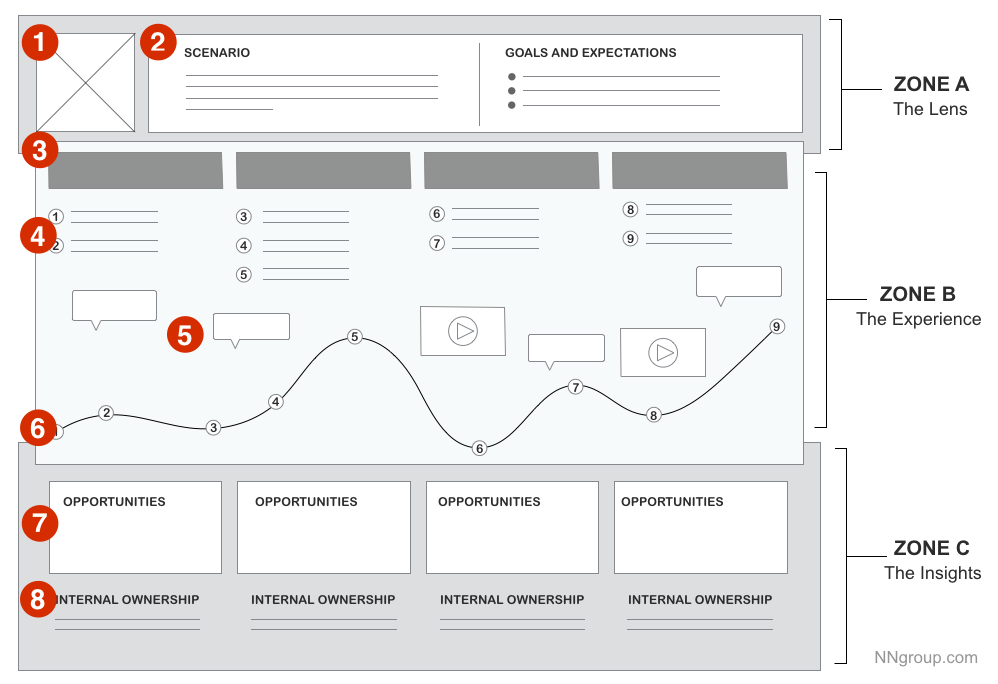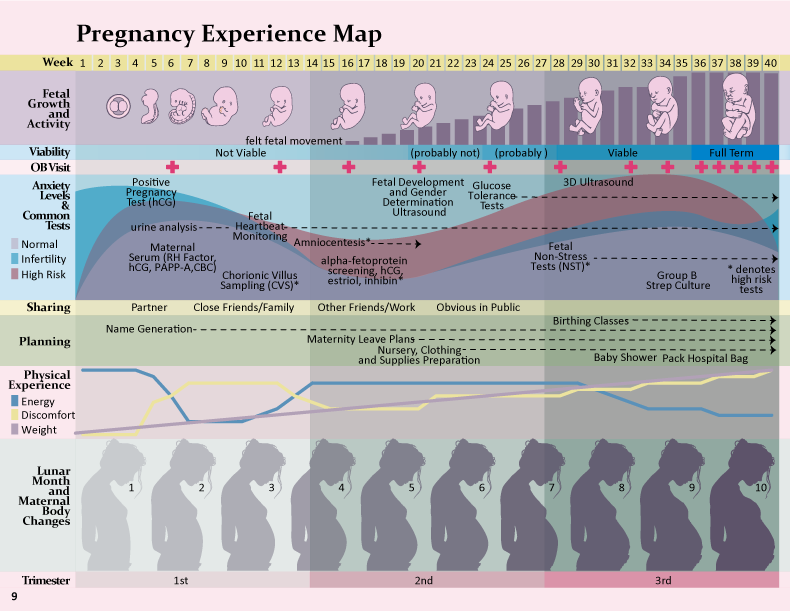Understanding Customers
Table of Contents
- Learning Objective
- Introduction
- Experience Mapping
- Customer Journey Mapping
- Jobs-to-be-Done
- Conclusion
Learning Objective
By the end of this lesson, students will be able to:
- Understand the importance of customer analysis in business strategy.
- Define and differentiate between the three customer analysis tools: experience mapping, customer journey mapping, and Jobs-to-be-Done
- Explain the relationship between the three tools and how they build upon each other.
- Determine which tool is most appropriate for different business scenarios.
Introduction
A company’s profits are an indicator of how valuable the company’s products are for its customers. Companies that consistently improve their customers’ quality of life through thoughtful solutions tend to gain a sustainable competitive advantage via market failure modes such as loyalty, switching costs, and network effects. The traditional analytical frameworks in the strategic management discipline don’t extensively focus on developing an understanding of the customer and rely on business functions such as marketing and product development to understand the customer. This lesson is aimed at highlighting some of these tools and introducing how to use them in the business strategy analysis context.
In this module, we’ll explore three powerful tools for understanding your customers:
- Experience mapping
- Customer journey mapping
- Jobs-to-be-Done
These tools will help you identify opportunities to enhance your offerings, increase customer satisfaction, and ultimately, strengthen your competitive advantage.
Experience Mapping
Experience mapping is a visualization tool that captures the complete experience a customer has with a problem context, product, service, or company. It goes beyond simply tracking customer interactions to capture the full range of emotions, thoughts, and perceptions that customers experience throughout their journey. The 4 Stages of AI Image Generation experience map is a great example of how to visualize the process that users go through when adopting a new technology or product.
Creating an experience map involves the following:
- Describe the customer experience in terms of distinct stages. For example, an air traveler arrives at the airport, checks in, boards, flies, disembarks, and leaves the airport.
- It is important to decide on the scope for a map that provides relevant insights. In the example above the goal is to understand the airport experience of a passenger and the scope of the map leaves out other business context such as booking or cancellation out of the map.
- Determine the following for each stage:
- The customer’s intent and goals.
- The actions they typically take irrespective of their intent and goals.
- The common quality-of-life descriptors and emotions associated with each phase.
- Apply color, iconography, and other visual elements to convey experience to the audience of the map.
This approach help us go past the broad idea of willingness-to-pay and gain a deep understanding of the customer’s perspective, identifying pain points, areas for improvement, and opportunities to enhance the overall experience. It helps businesses step into their customers’ shoes and see the world through their eyes.
The benefits of experience mapping include:
- Improved customer satisfaction
- Reduced customer churn
- Increased revenue
- Enhanced product development
- Stronger brand loyalty
Experience mapping can also be used to identify potential sources and threats to competitive advantage. By understanding the customer’s experience, businesses can identify what they are doing well and where they need to improve. This can help them develop strategies to strengthen their competitive position and mitigate potential threats.
Here’s another example of an experience map from an User Experience Designer, Beth Kyle:
As you can see, the experience map captures the full range of emotions, thoughts, and perceptions that a customer experiences throughout their journey.
Customer Journey Mapping
Customer journey mapping is a visual representation of the steps a customer takes when interacting with a company, from initial awareness to post-purchase engagement. Having a clear understanding of which part of the organization is responsible for what customer outcomes is critical to business strategy analysis, strategic initiative execution, resource allocation, and customer-focused innovation. Developing this understanding is not easy given that a typical business organization is organized into regional teams, business functions, or strategic business units. Customer Journey map (CJM) is a tool that can help develop this understanding.
CJM, at its core, is an outside-in analytical tool. It starts with a customer and ends with internal operational units and teams responsible for delivering customer outcomes. To be successful, it is important to be mindful that a business has multiple customers. For example, a family-owned business that functions as a last-mile distributor and customers who buy from that distributor are both customers for a business. Intents, experiences, customer-facing parts of the business, and behind-the-scenes value chain activities that enable relevant customer experiences differ greatly for different customers.
There are three steps to this analysis:
- Lens
- Experience
- Insights
The first step of applying CJM is explicitly articulating the scope by identifying the customer, interaction scenario, and their goals and expectations. The next step is a more fine-grained analysis of this interaction. This usually involves describing a sequence of phases that together describe the customer journey and associating intents, thoughts, actions, and emotions with each phase. This is similar to experience mapping. The key distinction is that experience mapping is generic and does not require any interaction with a company’s product or services. The final step is to gather insights for each phase based on customer experience and associate it with internal organizational units responsible for that experience. The kind of insights gathered can vary depending on the objective of the analysis. For example, an analyst may apply this tool to improve customer loyalty and retention or assess the readiness of the product to address a new customer segment.
 Image credit: Nielsen Norman Group
Image credit: Nielsen Norman Group
See this article for a more detailed discussion of this tool: https://www.nngroup.com/articles/customer-journey-mapping/.
The Customer Journey Map template is a good place to start your analysis.
Jobs-to-be-Done
Jobs-to-be-Done (JTBD) is a framework that focuses on understanding the underlying needs and motivations that drive customers to purchase and use a product or service. It’s based on the idea that customers “hire” a product to do a specific “job” for them.
The purpose of JTBD is to gain a deep understanding of the customer’s needs and motivations, identifying the specific jobs they are hiring a product to do. This can help businesses develop products and services that better meet customer needs and improve customer satisfaction.
An important benefit of this framework is that it motivates an analyst to carefully consider who else a customer hires when they don’t hire our product. This consideration helps uncover the true competition from a customer’s perspective and move beyond simple price- and feature-set-based competition, greatly expanding the decision choices available for a manager to be relevant in a marketplace.
The other benefits of JTBD include:
- Improved product development
- Increased customer satisfaction
- Reduced customer churn
- Enhanced marketing effectiveness
- Stronger competitive advantage
JTBD can also be linked to the concept of value proposition and how it can be used to develop and refine value propositions. By understanding the jobs customers are hiring a product to do, businesses can develop value propositions that clearly articulate the benefits of their products or services.
Watch Harvard Professor Clay Christensen discussing “What is the “Job” of a McDonald’s milkshake?”:
As you can see, the JTBD framework focuses on the underlying needs and motivations that drive customers to purchase and use a product or service. This information can be used to develop products and services that better meet customer needs and improve customer satisfaction.
Conclusion
Understanding customers is a critical component of business strategy. By understanding the customer’s needs, motivations, and pain points, businesses can develop products, services, and marketing campaigns that resonate with their target audience. The tools we’ve discussed - experience mapping, customer journey mapping, and Jobs-to-be-Done - offer a powerful framework for understanding customers and developing effective business strategies.
The tools are complementary. Experience mapping is particulary salient when we want to understand a problem context from the customer perspective without the constraints imposed by products and services of the company. Jobs-to-be-Done helps us truly appreciate what our products mean to our customers and what is the true competition from a customer’s perspective. Customer Journey Mapping provides an outside-in orientation to the analysis and can assist in not just understanding the customers but also in executing strategy.


